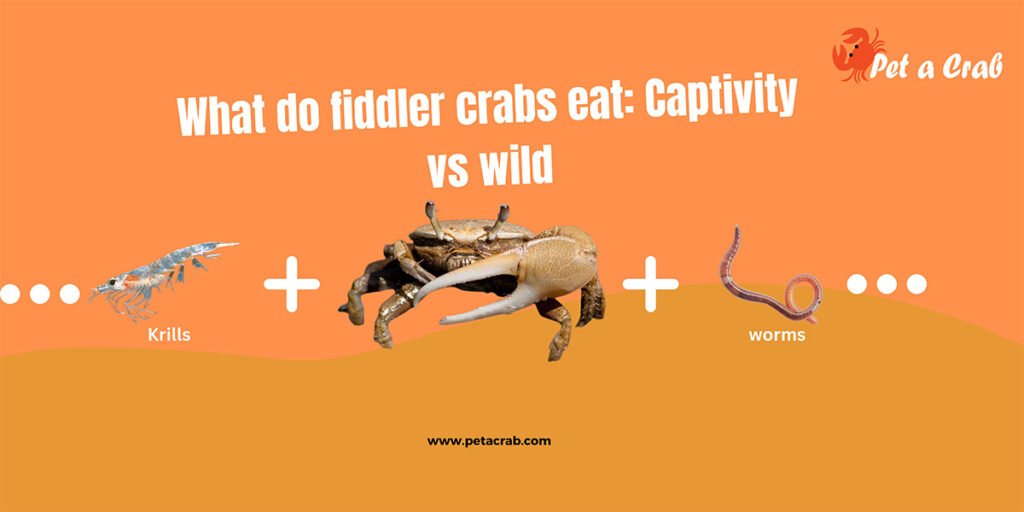Meet the strawberry crab, an eye-catching addition to any reef tank! Quite a silent species in aquarium hobby; often referred to as the Red Round Crab or Hawaiian Strawberry Crab. Beyond its stunning looks, grazing on algae, the crab helps keep tanks clean.
Whether you’re curious about its diet, care needs, or tank setup, this guide covers everything you need to know to keep your strawberry crab happy and healthy.
A quick overview of strawberry crab
- Common names: Red Round Crab, Red Boxing Crab, Hawaiian Strawberry Crab
- Scientific name: Neoliomera pubescens
- Care level: Easy
- Reef safe: Yes
- Diet: Omnivore
- Temperament: Semi-aggressive
- Color: Pink, Red
- Temperature: 22-28°C
- Size: 2 inches max
- Lifespan: 2-5 years
Habitat and distribution
Strawberry crabs (Neoliomera pubescens) are known for their vibrant appearance and unique habitat. These crabs originate from the pristine waters around Hawaii and can be found in various parts of the Indo-Pacific region. Notably, they inhabit areas around Hawaii, French Polynesia, Mauritius, and Taiwan, extending across both the Western and Central Pacific Ocean. Their presence is also documented in the Western Indian Ocean.
Strawberry crabs thrive in rocky reef zones, where they can often be spotted climbing over rocks. These crabs prefer these rocky environments, which provide them with shelter and access to food sources. The widespread distribution across tropical waters highlights their adaptability to different reef ecosystems.
Appearance
Strawberry crabs are easy to recognize thanks to their striking bright pink color, dotted with many small white spots. As they age, these irregular whitish spots become more prominent, giving them the appearance of a ripe strawberry, which is where their name comes from. Their carapace is not only vibrant but also adorned with small white bumps, adding texture to their unique look.
Their claws are blunt and flat on the inside of the hinge, specifically designed to help them feed on algae from rocks.Acting like a built-in cleaning crew, these claws allow strawberry crabs to thrive in rocky reef zones where algae grow abundantly. Interestingly, male and female strawberry crabs are easy to tell apart. Females have a much wider, oval pleon, while males display a narrower, tapering pleon. These crabs might be small, but their brilliant coloring and fascinating features make them a striking part of many reef ecosystems.
Strawberry crabs (Neoliomera pubescens) reach a size of about 5 centimeters, or roughly 2 inches, when fully grown. While they may not get as big as some other crabs, their small size makes them perfect for certain aquarium setups. Even though they stay relatively small, providing them with a spacious and stable environment helps ensure they thrive in captivity. Keep in mind that this size is typical for adults, so young crabs will be even smaller before they fully develop.

Behavior
They are active scavengers, always exploring their surroundings, especially when the lights go off. These crabs tend to be shy, often hiding at the slightest movement, even during nighttime. Described as “ninja-like” for their elusiveness, strawberry crabs prefer to stay out of sight, emerging only when they feel completely safe.
Despite their shy nature, strawberry crabs can be destructive at times, particularly when housed with others of their kind. They can become aggressive, fighting over space or food, which may lead to injuries like broken claws or legs. To minimize stress and potential conflict, it’s important to provide them with plenty of hiding spots and shelter, helping them feel more secure in their environment.
Handling these crabs should be avoided unless necessary, as it may stress them out, causing defensive behaviors. Though admired for their beautiful appearance, they are known to be elusive, making them more of a hidden gem in aquariums or reefs rather than a crab you’ll often see out in the open. Occasionally, they may hitchhike on live rocks, surprising aquarists with their unexpected arrival.
Are strawberry crabs reef safe?
Strawberry crabs are considered reef safe, meaning they won’t harm corals or disrupt delicate reef ecosystems. They can coexist peacefully with corals, making them a good addition to a reef tank.
However, there are many reports that they can be destructive to corals. So be cautious—
What do strawberry crabs eat?
In the wild, strawberry crabs are omnivores and feed on a variety of things. They help control algae growth by eating it off rocks and surfaces. Along with algae, they scavenge for detritus, leftover food from other creatures, and small invertebrates they can find. Their ability to eat both plant and animal matter helps them thrive in their natural habitat.

In captivity, it’s important to offer a diet that mirrors what they would naturally eat. Feeding them once or twice a day with a mix of herbivorous and meaty foods is ideal. A balanced diet should include marine-based flakes or pellets, along with small pieces of shrimp, krill, or mussels. Additionally, offering seaweed and algae will keep them healthy and satisfied. If possible, supplement their meals with fresh or frozen seafood and ensure they get a variety of green foods like Chaeto algae to meet their nutritional needs.
Strawberry crab care
Tank setup
Size
If it is only about one strawberry crab in a tank, 5 gallons would be enough. You can also keep them in an existing tank or a sump. If I have to tell precisely, that would be 20-30 gallon.
Substrate
Choose a sandy substrate with crushed gravels; the substrate should be at least 2 inches deep. This will help them burrow properly with ease.
Decoration
Since they graze on live rocks in the wild, you must provide them with live rocks to help them feel at home. Add any kind of rocks, corals or anemones you like; just ensure they get plenty of hiding places.
Water parameters
Maintaining proper water conditions is crucial for strawberry crabs in an aquarium. A reliable filtration system helps keep water quality high, while moderate water circulation simulates their natural environment without creating harsh currents. Ideal water parameters include a temperature range of 72-78°F (22-28°C), specific gravity (SG) of 1.020-1.025, and pH levels between 8.1-8.4. These crabs thrive best when dKH is kept between 8-12.
Strawberry crabs, like most invertebrates, do not handle large swings in water parameters well. It’s important to avoid any metal traces, especially copper, in their environment, as they are sensitive to such toxins. Acclimation should be done carefully when introducing them to a new tank. Floating them in an area with low light for about 15-20 minutes allows them to temperature adjust before slowly drip acclimating to their new water conditions.

To support their molting process, adding iodine to the tank can be beneficial. Molting, when crabs shed their old exoskeleton and grow a new one, is essential for their growth and reproduction. Although some hobbyists may not observe molting frequently, it remains a critical process for their health. Lastly, blue moon lighting helps simulate their natural habitat, making them feel more at ease.
Strawberry crab tank mates
Strawberry crabs are generally peaceful and can coexist well with many tank mates. They tend to get along with other invertebrates and small, non-aggressive fish. However, it’s important to be mindful of what species you introduce into their environment. While strawberry crabs are not usually aggressive, there are occasional reports of them harming ornamental shrimp or smaller fish, especially if these creatures move slowly or are weak.
It’s best to avoid housing strawberry crabs with slow-moving fish or very small invertebrates, as they might view these as food. In rare cases, they have been known to attack other tank inhabitants, like cleaner shrimp or hermit crabs. Keeping them with more robust, quicker species is a safer choice to ensure a peaceful aquarium environment.
When considering tank mates, always monitor how the crabs interact with others. Even though they can be personable, stress or hunger might lead to more aggressive behavior, so providing proper food and hiding places will help them feel secure and reduce the risk of conflicts.
Mating and breeding of strawberry crabs
Strawberry crabs have been observed spawning in home aquariums, though successfully raising larvae to adulthood in captivity remains extremely challenging. The tiny larvae are highly sensitive and difficult to feed, and so far, no reports suggest successful breeding in captivity beyond the spawning stage.
An interesting observation of strawberry crab mating behavior highlights the unique interaction between male and female crabs. Initially thought to be aggression, the larger male engages in a copulatory embrace with the smaller female. The male begins by waving his claws, signaling his intent. The female responds by rolling onto her back, allowing the male to climb on top, and the two remain in this gentle embrace for several hours. This process likely involves the male’s gonopods transferring sperm to the female.

Mating involves a complex ritual, where the male attracts a sexually mature female by releasing pheromones and performing a “dance.” When ready to mate, the female softens her shell during molting, and sperm is transferred via the gonopores located on her abdomen. Interestingly, the female can store this sperm and fertilize multiple egg sacs over time, increasing the chances of successful reproduction in natural conditions.
Can you eat strawberry crab?
Do not eat strawberry crabs. Consuming these crabs is dangerous because their flesh contains harmful toxins, specifically saxitoxin and tetrodotoxin. These toxins are known for causing severe health issues, with tetrodotoxin being the same deadly substance found in pufferfish. Even though strawberry crabs don’t have venomous parts, the toxins in their meat can be fatal whether eaten raw or cooked, as no antidote exists.
Saxitoxin can cause serious reactions, and tetrodotoxin is particularly notorious for being highly toxic. Because of these potent toxins, it’s crucial to avoid eating strawberry crabs entirely. Consumption could be life-threatening, making it unsafe no matter how it is prepared.
Learn interesting facts about the red sea crab.


